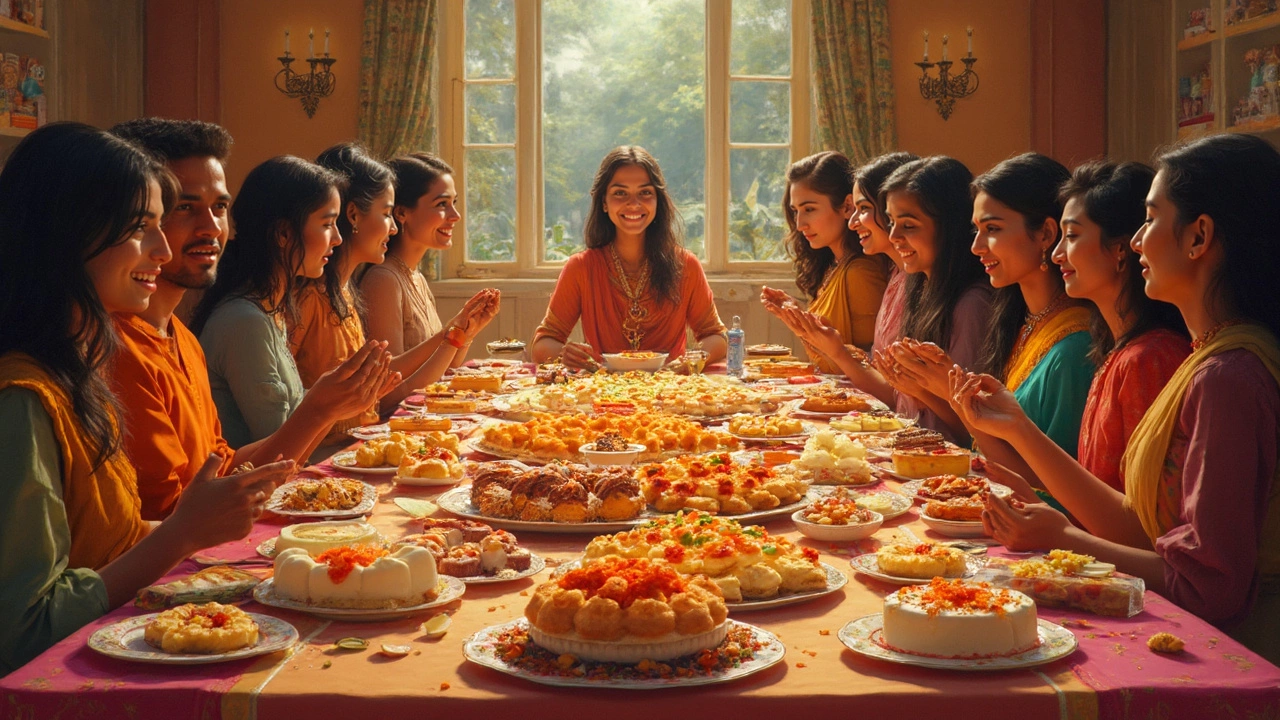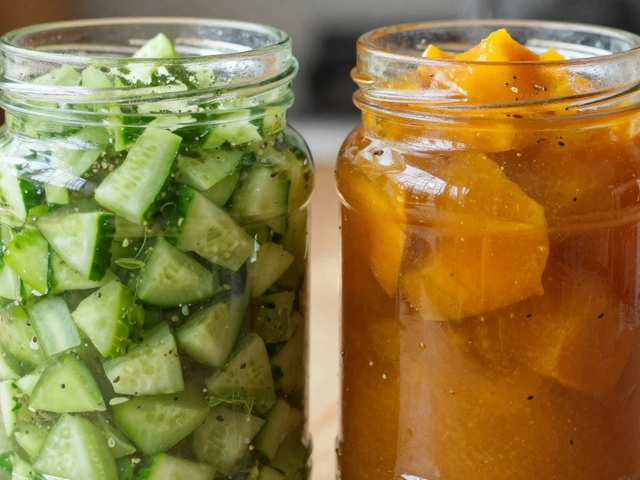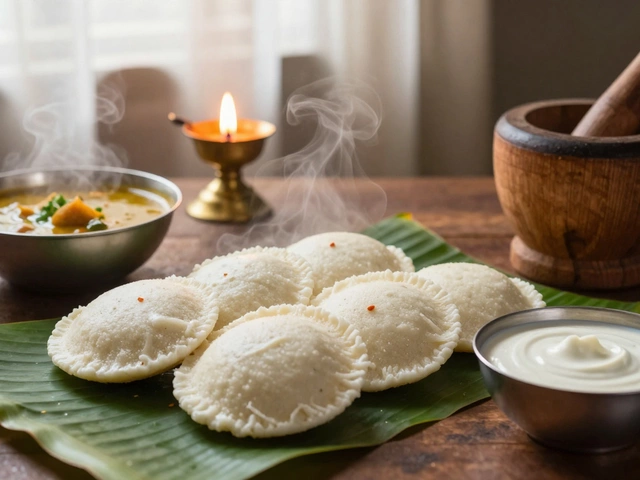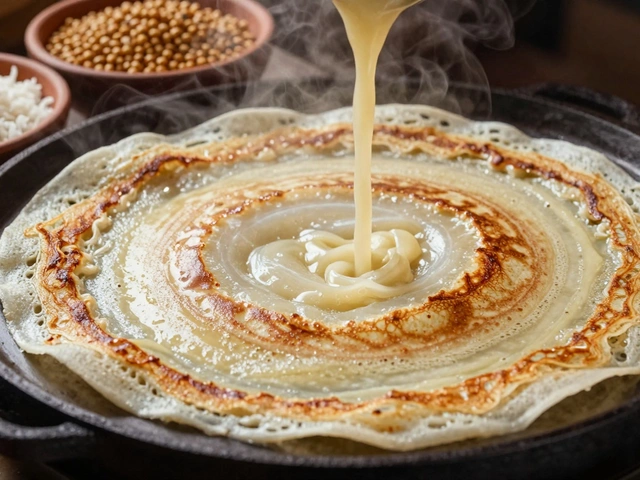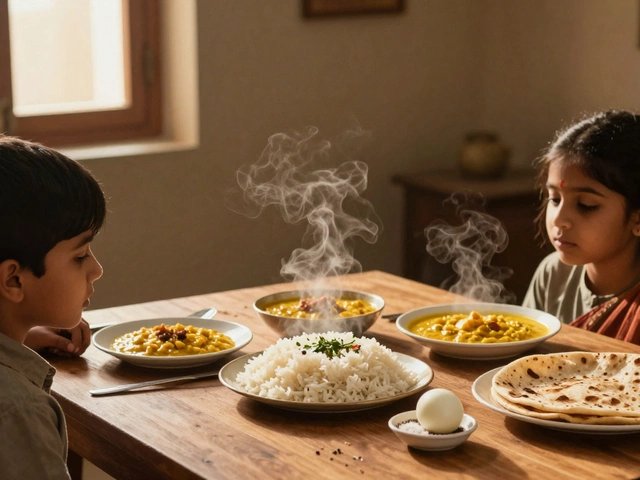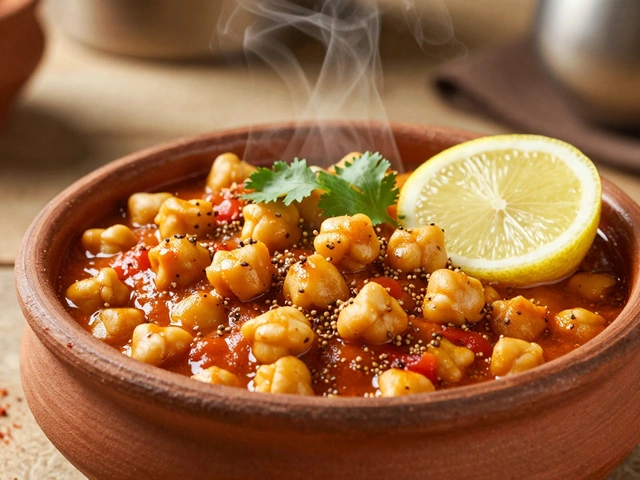If you think you have a sweet tooth, you might be surprised by how much sugar people eat around the world. Some countries practically live on desserts—it's practically an art form. Ever heard of people in Germany starting their day with cake? Or kids in India sharing laddoos during festivals? There's a reason desserts have such a hold on us—and it's not just taste.
Most official surveys put Germany on top for sweet consumption, with the US, Switzerland, and the UK not far behind. But get this: Japan, even with all those pretty wagashi treats, eats way less sugar per person than you probably expect. Meanwhile, India stands out for its love of syrupy, milk-based desserts—gulab jamun could easily be a national treasure.
So, what actually drives these differences? Culture and tradition, of course. It’s not just about grabbing a candy bar after lunch. In some places, sweets show up at every big life event: weddings, holidays, you name it. In others, dessert is a daily habit. Want to know where India fits into this global sugar rush and how you can enjoy sweets smarter? Let’s just say there are more surprises ahead.
- Who Tops the Global Sugar Charts?
- Why Do Some Countries Eat More Sweets?
- The Place of Indian Sweets in the World
- Tips for Satisfying Your Sweet Tooth (Without the Guilt)
- Global Sweets You Should Try at Home
Who Tops the Global Sugar Charts?
So you're probably curious—which nationality eats the most sweets? If you’re visualizing chocolate bars and jelly beans flying off shelves, you’re on the right track. When you look at the numbers, it’s the Germans who come out on top almost every year. On average, people in Germany eat about 30-35 kilograms of sugar per person per year. That’s basically a suitcase of sugar… for every single person. No wonder their bakeries are always packed.
The United States isn’t far behind. Americans average about 28-32 kilograms per person annually. Snack aisles there are loaded, and dessert just seems like another food group. Aside from these two, countries like Switzerland, the UK, and the Netherlands are pretty close contenders. It might surprise you, though, that candy and chocolate are top sellers even in Sweden and Norway. Their stores have weekends called "lördagsgodis"—it literally means “Saturday candy.” Kids go wild for it.
| Country | Average Sugar Consumption (kg/person/year) |
|---|---|
| Germany | 35 |
| United States | 33 |
| Switzerland | 28 |
| United Kingdom | 27 |
| Netherlands | 26 |
But what about India? Here’s the fun twist: Indian sweets don’t always rely on processed sugar—they use jaggery, honey, or condensed milk. But, thanks to thousands of sweet shops and sugar syrup-heavy treats, India’s sugar consumption is climbing fast, too. However, in terms of pure sweets-eaten-per-person, European countries still take the lead by a long shot.
If you walk into a grocery store in these top-ranking countries, you’ll see the difference right away. Sweets and desserts aren’t just for special days—they’re truly part of everyday life. Don’t be shocked if you visit and see breakfast pastries that are basically dessert. That’s just how they roll.
Why Do Some Countries Eat More Sweets?
It’s not just a matter of taste—there are some solid reasons why certain countries can’t get enough desserts. Let’s break it down. First, culture messes with our cravings big time. In Germany, for example, it’s totally normal to have cake in the afternoon, a tradition called Kuchenzeit. You won’t see the same thing happen daily in Japan, where sweets are usually for special occasions.
Money matters, too. Countries with higher incomes like the US or Switzerland have more spending room for treats. In fact, per capita, folks in high-income countries eat almost twice as many sweet snacks as those in lower-income places. It’s not that people in India or Brazil don’t love their sweets—they just tend to save desserts for festivals or family gatherings.
| Country | Average Sugar Intake (kg/year/person) |
|---|---|
| Germany | 36 |
| United States | 34 |
| India | 19 |
| Japan | 16 |
Climate actually plays a part. In warm places, like parts of India, sweets are often made without chocolate or cream because they melt. Instead, you see a lot of fudge-like barfis or syrup-soaked gulab jamun. In colder places like Scandinavia or Canada, heavier baked goods and chocolates take the spotlight.
Marketing and food availability change habits, too. Countries with big supermarkets and convenience stores—like the US and UK—make grabbing a sweets fix ridiculously easy. You’re probably not shocked, but these spots report some of the world’s highest sugar worldwide sales.
Tradition, money, climate, and even advertising mix together to shape those global dessert habits. If you’re wondering why you see laddoos only during Indian festivals or why ice cream is so huge in the US, now you know it’s way more than just personal preference. It’s culture, wallet, and what’s around you right now.
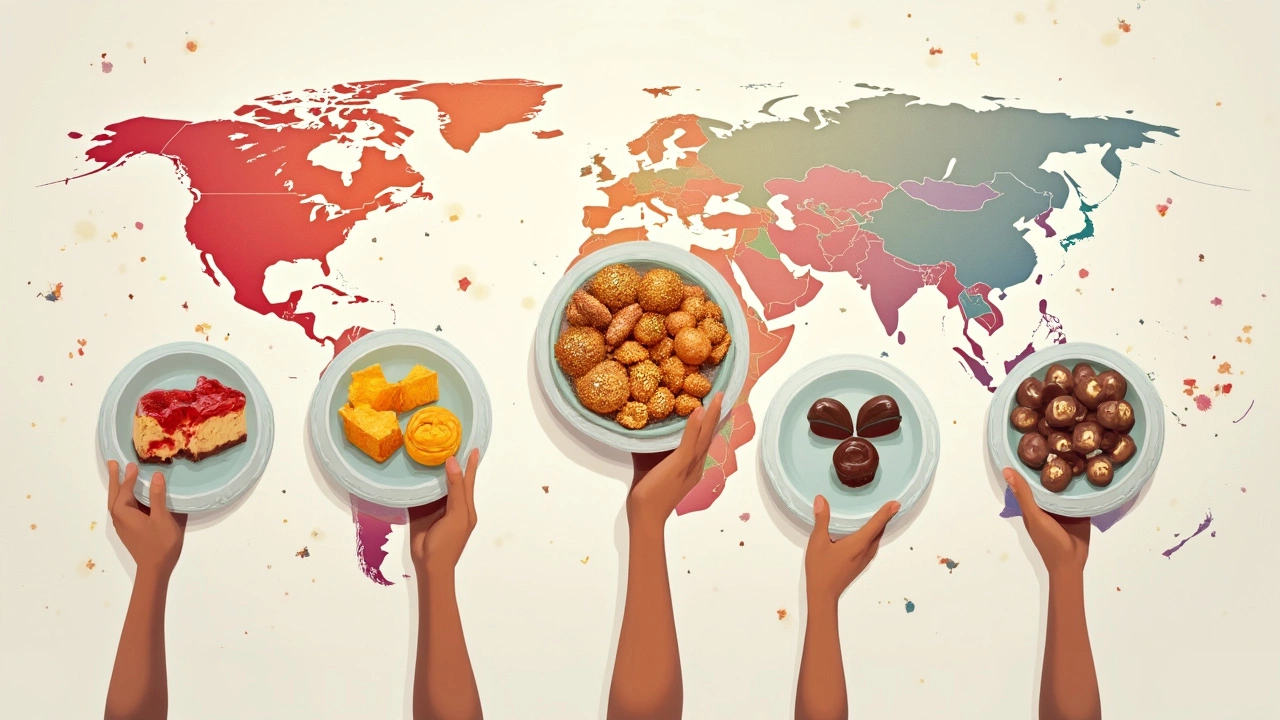
The Place of Indian Sweets in the World
When you think of Indian sweets, it’s not just about sugar. It’s about festivals, family, and making memories. Indian sweets like jalebi, gulab jamun, and rasgulla don’t just stay in India—these treats have a real presence around the world. Whether it’s Diwali in Dubai or a wedding in London, you’ll probably find a plate of mithai sitting proudly on the table.
India doesn’t top the global chart for total sugar eaten per person—Germans and Americans eat more in sheer volume. But here’s the thing: India uses sweets in ways that go way beyond a snack. Special occasions, pujas, gifts, and even casual visits can include a box of sweets. In fact, an article from Hindustan Times in 2024 mentioned that Indian sweet shops see a sales spike of over 60% during major festivals like Diwali, Holi, and Eid.
Walk into any Indian city (or even neighborhoods in the US and UK with a South Asian community), and you’ll see mithai shops everywhere. Indian Americans spend an estimated $218 million a year on traditional sweets and desserts according to a 2023 market report—proof these recipes cross borders fast.
Why does India love its sweets so much? A lot of it comes down to how sweets are a reward, a prayer offering, or just a way to show affection. Plus, there’s serious variety. Check out just some of the popular choices you’ll spot worldwide:
- Gulab Jamun: Those soft, syrup-soaked dough balls that nobody can resist.
- Rasgulla: Spongy, spongy cheese balls in sweet syrup, originally from Bengal.
- Ladoo/Laddu: Round balls made with gram flour, coconut, or semolina—different regions, different flavors.
- Barfi: Milk-based fudge, often cut into diamonds and decked in edible silver leaf.
- Jalebi: Twirled, deep-fried, and dunked in hot syrup. Crispy on the outside, melt-in-your-mouth inside.
If you’re wondering why so many people fall in love with Indian sweets—even those who didn’t grow up eating them—it’s the blend of textures and spices. Some sweets get bright with cardamom or rosewater, while others pack in cashews, pistachios, or saffron for that luxury feel. And of course, it’s all about sharing. Giving mithai is just good manners in Indian culture. No one leaves a celebration empty-handed.
Want a sense of where Indian sweets stack up in the wider world? Here’s a direct comparison with some sweet-eating nations:
| Country | Average Sweets Consumed Per Person (Sugar/year, kg) | Role of Sweets in Culture |
|---|---|---|
| Germany | 36 | Daily habit, all ages |
| United States | 33 | Dessert, snacks, holidays |
| India | 19 | Festivals, ceremonies, gifts |
| Japan | 16 | Ceremonial, smaller portions |
You see, Indian sweets may not mean the highest per-person sugar stats, but they definitely rule when it comes to special occasions and variety. The world’s catching on—now, mithai boxes are showing up everywhere, from office parties in Sydney to birthdays in Toronto.
Tips for Satisfying Your Sweet Tooth (Without the Guilt)
We all know the feeling—craving something sweet after lunch or during a late-night binge-watch. The good news? You don't have to swear off your favorite sweets just to be healthy. It's all about smart choices and a bit of balance.
First off, moderation really matters. According to the World Health Organization, cutting added sugars to less than 10% of your daily energy intake seriously lowers your risk for obesity and heart problems. That’s about 50 grams (12 teaspoons) a day for most adults. No one’s saying you can’t enjoy Indian sweets; just space them out and keep portions in check.
"Desserts don’t have to be loaded with guilt. It’s about savoring each bite and knowing when enough is enough." – Dr. Ranjana Singh, Nutritionist at AIIMS Delhi
Trying to satisfy your sweet fix in a healthier way? Here are some easy ideas that really work:
- Go for sweets with nuts, dried fruit, or whole grains—they keep you full longer. Think badam burfi instead of just plain sugar candy.
- Make homemade mithai so you control the sugar. Use alternatives like jaggery, dates, or honey to sweeten your ladoos.
- Pair your favorite desserts with protein or fiber. Chana dal halwa or oats kheer hits the spot and gives you lasting energy.
- Try sharing your dessert. One gulab jamun split is still a treat and way less sugar per person.
- Don’t eat sweets straight from a big pack. Put a small portion in a bowl, enjoy, and stash the rest away.
If you’re a numbers person, this simple stat might help you cut down mindlessly:
| Popular Sweet | Sugar per serving (g) |
|---|---|
| Gulab Jamun (2 pieces) | 30 |
| Chocolate bar (standard size) | 25 |
| Jalebi (2 pieces) | 38 |
| Apple (medium) | 19 (natural sugar) |
Here’s a fun tip: If you're cooking at home, try mixing traditional and modern. Swap half the sugar for mashed banana in kheer or add roasted nuts to lower the sweetness but boost the taste. Max likes it when I drop a piece of khoya on the floor, but you’re better off aiming for your own portion!
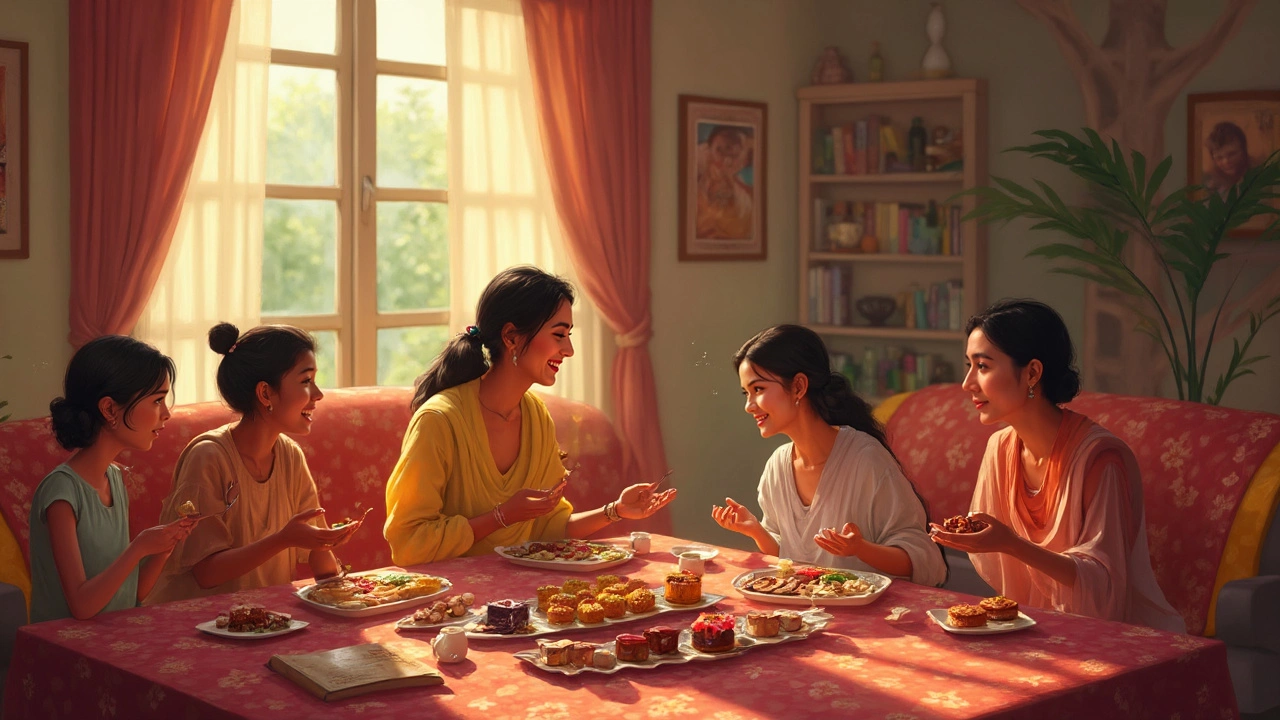
Global Sweets You Should Try at Home
The world is seriously packed with must-try desserts, and you don’t have to be a pro baker to get started. If you've ever wondered how people satisfy their cravings in other countries, here are some favorites that have fans on every continent. These picks show just how universal dessert is, and you’ll spot lots of ties to Indian sweets too.
- Gulab Jamun (India): These doughy balls swim in a warm, sugary syrup. Super easy to make if you use ready mixes, but you can also follow a simple recipe with powdered milk, flour, and cardamom. Serve warm!
- Baklava (Turkey/Greece): It’s all about layers—crispy pastry, nuts, syrup. Pre-made phyllo dough makes this much less fussy, and your kitchen will smell amazing.
- Mochi (Japan): These chewy rice cakes come with sweet fillings (think red bean, matcha, or even ice cream). Some Asian stores sell mochi kits, or you can try a microwave version at home.
- Tiramisu (Italy): If you love coffee, this one should top your list. Layer some ladyfingers, mascarpone, coffee, and cocoa, then chill—it’s rich, but you don’t even need to turn on the oven.
- Churros (Spain/Mexico): Make some dough, fry strips, and roll in cinnamon sugar. Dip them into chocolate and you’re golden. You can use a piping bag or even a ziplock with the corner cut off.
Wondering which countries eat the most sweets? Here's a quick look at annual per capita sugar consumption in kilograms:
| Country | Annual Sugar Consumption (kg per person) |
|---|---|
| Germany | 36 |
| United States | 34 |
| United Kingdom | 30 |
| India | 19 |
| Japan | 17 |
If you’re new to international baking, start easy—pick one recipe and go for it. For Indian sweets, laddoos and barfis are super beginner-friendly. If you try making baklava, it’s not cheating to use store-bought phyllo. And don’t stress on being fancy; home-style is where the flavor’s at. Got kids (or curious friends)? Invite them to help—they’ll probably eat half your ingredients, but that’s just part of the fun.
